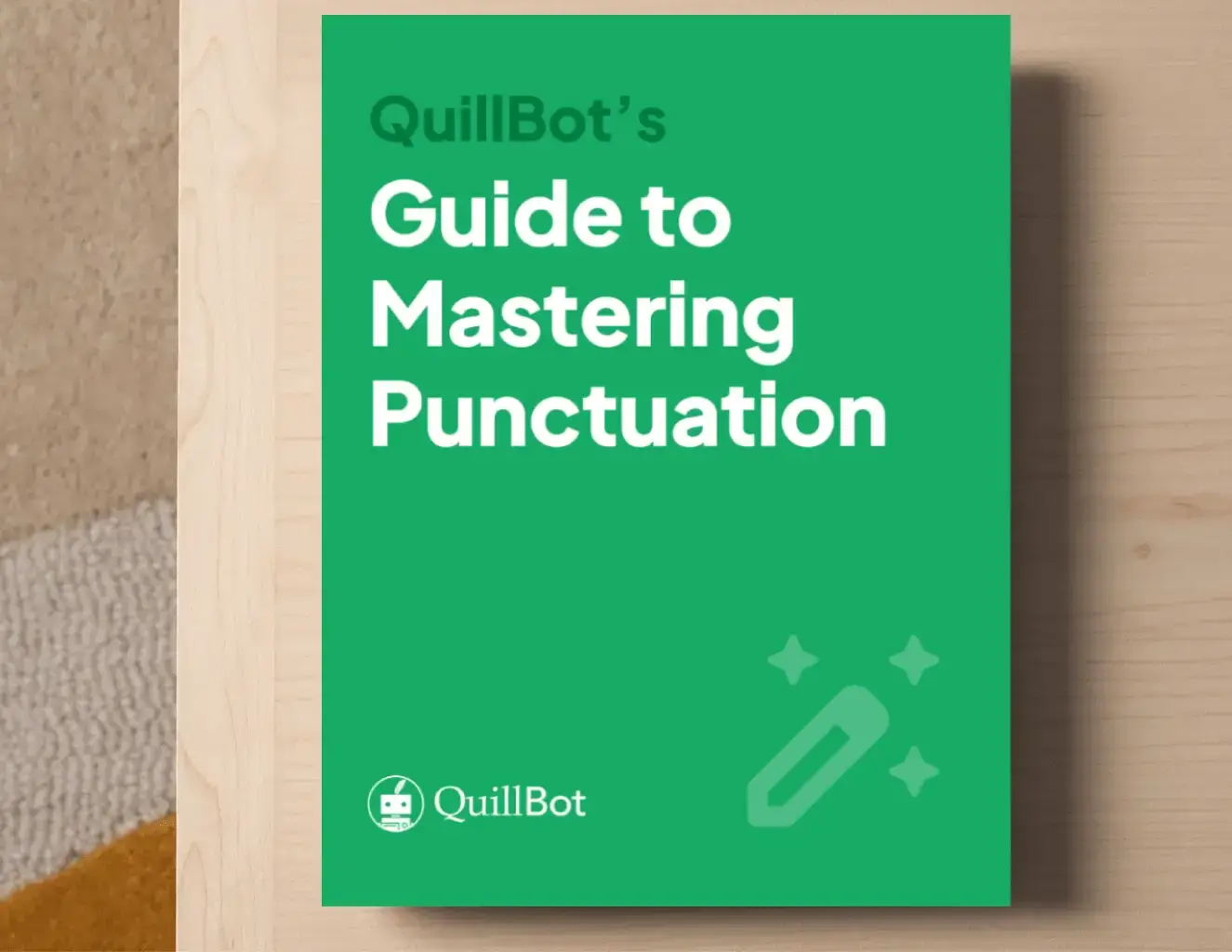How to Write a Paragraph for the Body of an Essay
A paragraph is a group of sentences that work together to serve an overall purpose. Academic essays have three types of paragraphs:
- The introduction paragraph sets up the topic and main idea.
- Body paragraphs develop different aspects of the main idea.
- The conclusion paragraph summarizes the main idea and key points.
To write a paragraph for the body of an essay, start with a topic sentence, add supporting details, and explain how the evidence supports your main idea.
The tips and examples below illustrate how to write a body paragraph in more detail.
What is a paragraph?
A paragraph is one of the main building blocks of an essay. It’s a collection of sentences that express a single idea or serve a specific purpose. Paragraphs make essays reader friendly because they break up your content into digestible pieces. In academic essays, paragraphs tend to have these characteristics:
- An indentation on the first line to help readers tell the paragraphs apart
- Minimum of 4–5 sentences but often as many as 7–10
- A variety of sentence structures to keep readers engaged
- Transition words (or sentence starters) to show how the different paragraphs and sentences of the essay are connected or related (e.g., “however” or “for example”)
Each type of paragraph (introduction, body, or conclusion) has additional characteristics that are specific to the role that it plays in an essay.
What is a body paragraph?
The paragraphs between the introduction and conclusion of an essay are called body paragraphs. Each body paragraph in an essay focuses on a separate point or a different aspect of your main idea. In the example of an essay plan below, the highlighted portion represents the body paragraphs.
- Introduction
- Light exercise
- Box breathing
- Meditation
- Journaling
- Conclusion
Different types of essays need different types of body paragraphs. Some of the most common types of body paragraphs that you might need to write for school essays include:
- Argument: A reason for an opinion
- Cause/effect: A cause or effect of something
- Process: A step in a process
- Compare/contrast: A similarity or difference
- Literary analysis: A literary element or device that supports an author’s theme
An essay prompt usually includes instructions or hints about what types of body paragraph topics are necessary.
How to write a body paragraph
To write a body paragraph, follow three steps:
- Write a topic sentence.
- Add supporting details.
- Write a concluding sentence.
The details for each of these steps are illustrated below.
How to write a topic sentence
The first sentence of a body paragraph is called a topic sentence. It establishes the focus and significance of the upcoming paragraph. To write a topic sentence, include three types of information:
- Which topic the body paragraph will cover
- How that topic is connected to the main idea of your whole essay
- How the paragraph relates to the other body paragraphs in the essay (optional)
| Essay type | Topic sentence example |
|---|---|
| Argument | Another reason K–12 schools should teach cursive is to equip students to read historical documents. |
| Cause/effect | An increase in literacy rates was one of the main effects of the printing press. |
| Literary analysis | Lee also explores the theme of moral courage through Atticus Finch’s commitment to justice in the face of community prejudice. |
How to write supporting details
To write the supporting details for a body paragraph, consider what type of information you need in order to educate your reader about the topic sentence. These might include:
- Examples of events, people, or situations
- Facts and statistics from recent surveys or studies
- Descriptions that use the five senses
- Quotations or paraphrases of what experts have written
- Comparisons or analogies to similar situations
- Instructions (e.g., in a process essays)
- Evidence from a story, novel, poem, etc. (for a literary analysis essay)
In most cases, you need at least three supporting details in a body paragraph (but usually more). As you add the supporting details to a body paragraph, use transition words to show how they’re connected, such as:
- For example
- Additionally
- Also
- Another
- However
<h3=”how-to-write-concluding-sentence”>How to write a concluding sentence
Finally, end a body paragraph with a concluding sentence that summarizes the overall point of your paragraph. In this sentence, explain why the paragraph topic is relevant to your main idea or worthy of consideration.
Body paragraph example
The example below is the first body paragraph of an essay about ways to reduce stress. Another simple yet highly effective strategy for reducing stress is box breathing. This method involves inhaling, holding the breath, exhaling, and pausing again, each for an equal count, typically four seconds (or a count of four). Research shows that controlled breathing techniques like box breathing can lower cortisol levels, slow the heart rate, and create a sense of calm (Nestor, 2020). Box breathing offers both long-term and short-term effects on stress. In the long term, a daily routine of box breathing makes a noticeable difference in anxiety levels and responses to everyday stressors (Balban, 2023). Box breathing also has immediate benefits when people use it during moments of high stress or mental overwhelm. For example, military personnel are trained to use box breathing during combat, but the immediate benefits also apply to situations like job interviews, public speaking, rush-hour traffic, and standardized tests (Vranich & Sabin, 2020). Because box breathing can be done almost anywhere, at any time, it’s one of the most practical options for reducing stress.
Frequently asked questions about how to write a paragraph
- How many body paragraphs should be in an essay?
-
To find out how many body paragraphs should be in an essay, look for clues such as these in your assignment instructions.
- If your assignment says “5-paragraph essay,” you need 3 body paragraphs. The 5-paragraph format is common for beginner-level writing classes and essay test questions.
- Look for a required word count. An essay paragraph is usually about 200 words. Divide the total number of words required by 200 and subtract 2 for the introduction and conclusion.
- Look for a required number of pages, and plan for about 2 paragraphs on each double-spaced page.
While your instructor is always the best source of information about how many body paragraphs you need, QuillBot’s AI Chat can also help you unpack assignment requirements if you include them in your AI prompt.
- What are good transition words to start a paragraph?
-
Good transition words and phrases to start a paragraph depend on the purpose of the paragraph and how it relates to the previous one.
Transition words to start a paragraph Function of paragraph Transition word examples Introducing a point to begin with, first of all, first (or second or third) Building on a previous point furthermore, to illustrate, considering x, on the subject of x, similarly, consequently, returning to x Contrasting with a previous point however, in contrast, on the other hand QuillBot’s free AI paragraph generator makes starting paragraphs easy. Simply give it a prompt, and it will instantly craft a well-structured paragraph. Or, you can input paragraphs you’ve already written an ask the tool to suggest appropriate transitions.
- How do I start a body paragraph?
-
To start a body paragraph when writing an essay, you should write a topic sentence that includes two pieces of information:
- The topic of the upcoming paragraph
- How that body paragraph topic is connected to your essay’s main idea
You can also include a transition word or phrase (e.g., “also” or “additionally”) to show how the body paragraph relates to the others in your essay. Here are examples of topic sentences from a literary analysis essay:
- One way that Walker develops a theme about cultural heritage is through the use of dialogue.
- Walker also uses imagery to differentiate Dee’s approach to cultural heritage from Mama’s.
No matter how you start your body paragraphs, they need to be error free. QuillBot’s free Grammar Checker will instantly find and fix typos.
- How long is an essay paragraph?
-
There is no absolute rule for this, but in general, a paragraph will be between 150 and 250 words.
If it is much shorter than this, then you need to consider if the point you are making is substantial enough or if you have included enough evidence to support your point.
If it is much longer, then you need to consider breaking it down into smaller points when writing your essay.
That is not to say that a 300- or 350-word paragraph will always be too long. But it is a guideline to help you judge the effectiveness of your essay.
QuillBot’s Paraphrasing extension can help you phrase paragraphs in the most effective way. Additionally, QuillBot’s Word Counter tool can help you track the word count and readability level of your essay.
Cite this Quillbot article
We encourage the use of reliable sources in all types of writing. You can copy and paste the citation or click the "Cite this article" button to automatically add it to our free Citation Generator.
Routh, N. (2025, September 23). How to Write a Paragraph for the Body of an Essay. Quillbot. Retrieved November 13, 2025, from https://quillbot.com/blog/academic-writing/how-to-write-a-body-paragraph/

